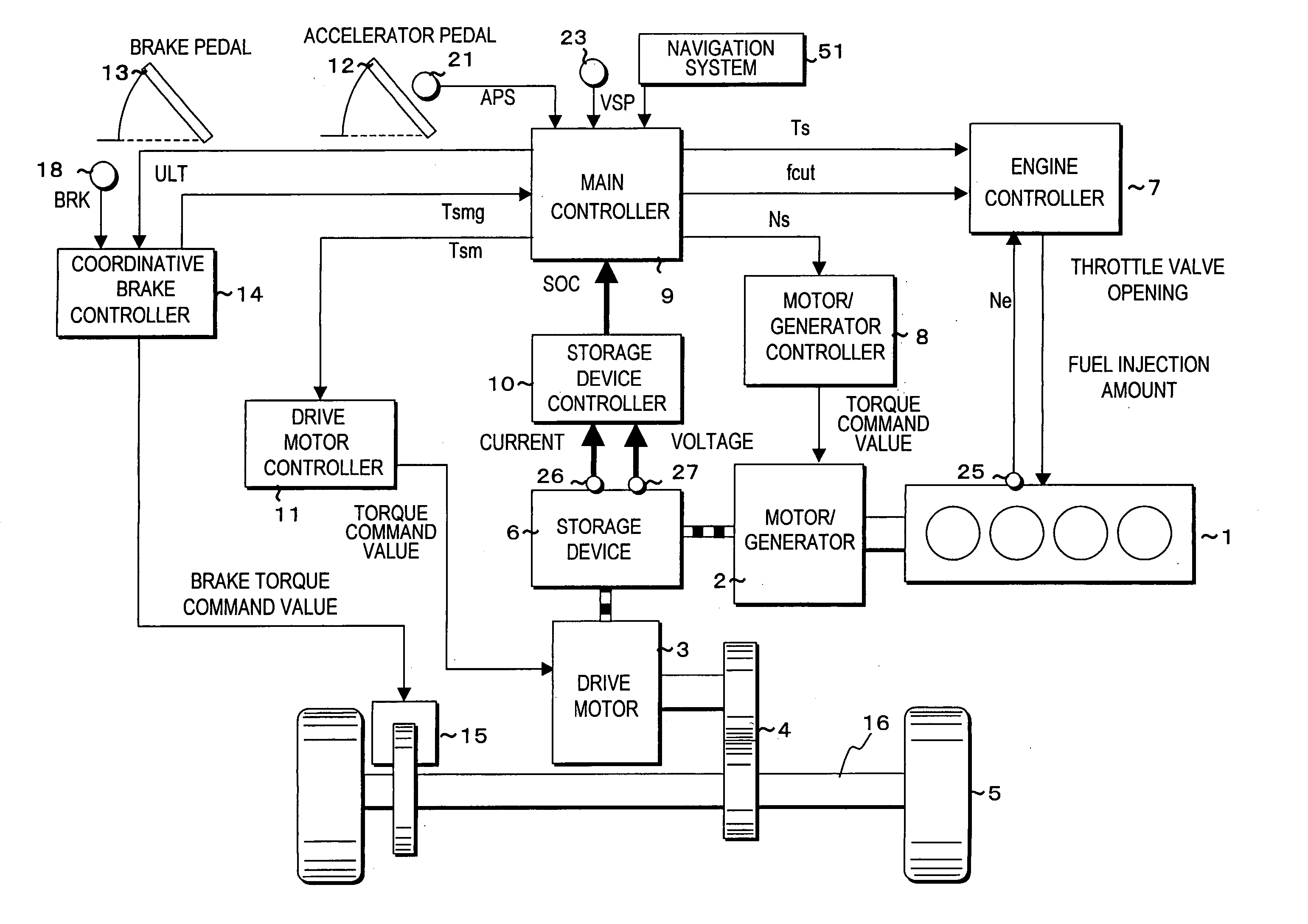Regeneration control for hybrid vehicle
a hybrid vehicle and hybrid technology, applied in the direction of motor/generator/converter stopper, propulsion parts, engine-driven generators, etc., can solve the problems of frequent restriction of electric power storage devices, adversely affecting the driving performance of vehicles, and abrupt increase in engine rotation speed, so as to prevent the effect of rotation speed
- Summary
- Abstract
- Description
- Claims
- Application Information
AI Technical Summary
Benefits of technology
Problems solved by technology
Method used
Image
Examples
Embodiment Construction
[0023]FIG. 1 shows a series hybrid vehicle to which this embodiment is applied.
[0024] The hybrid vehicle comprises an engine 1, a motor / generator 2, an electric power storage device 6, and a drive motor 3. The motor / generator 2 is directly coupled to the engine 1 and converts the output of the engine 1 into electric power. The electric power storage device 6 accumulates the power generated by the motor / generator 2. The drive motor 3 is driven by the power generated by the motor / generator 2 and / or the power accumulated in the electric power storage device 6. The motor / generator 2 mainly generates power but can also consume the power from the electric power storage device 6 or the regenerated power from the drive motor 3. Therefore, the motor / generator 2 functions as power generating means or power consuming means. The engine 1, the motor / generator 2, and the drive motor 3 constitute a power train. The torque of the drive motor 3 is transmitted to wheels 5 (tires) via a final gear 4 ...
PUM
 Login to View More
Login to View More Abstract
Description
Claims
Application Information
 Login to View More
Login to View More - R&D
- Intellectual Property
- Life Sciences
- Materials
- Tech Scout
- Unparalleled Data Quality
- Higher Quality Content
- 60% Fewer Hallucinations
Browse by: Latest US Patents, China's latest patents, Technical Efficacy Thesaurus, Application Domain, Technology Topic, Popular Technical Reports.
© 2025 PatSnap. All rights reserved.Legal|Privacy policy|Modern Slavery Act Transparency Statement|Sitemap|About US| Contact US: help@patsnap.com



